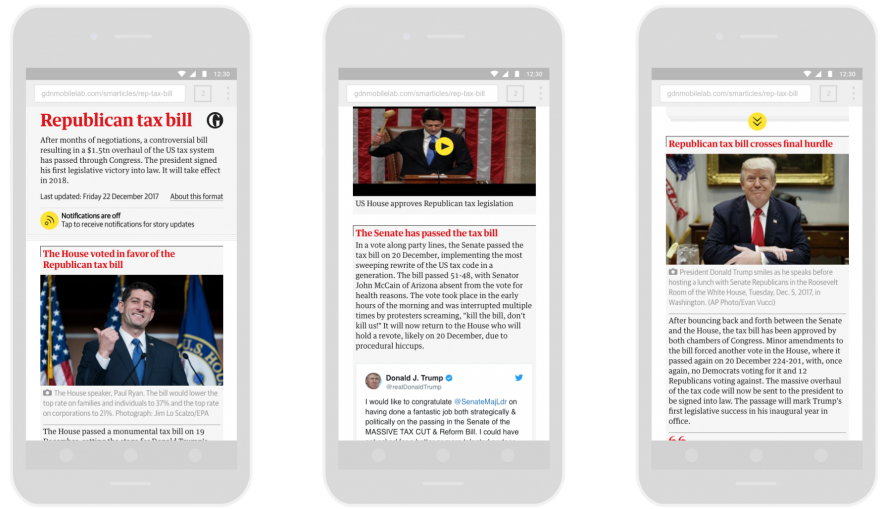Next week at Newscamp in Augsburg we’ll be releasing our research report “Reinventing Digital Editions” which looks at the rising trend in Europe of newspaper editions that are digital-only. In the spirit of innovative news formats, this week we have three new storytelling formats to serve as inspiration.
To receive a copy of the research report before it’s released, sign up here.
Story packages: give readers the context they need
Vox Media’s new template for story packages give readers more background information on the topics that interest them most. It’s different than just a category page, because it is tightly focused and meant to be read as a whole. That’s to say that if a reader is interested in one story from the package, the rest of the package should be interesting for them as well. By going back to the homepage of the package, the reader can see more stories relevant to them.
A package is a collection of related stories. Those related stories could be articles, features, could be any sort of individual page. They’re united by the landing page — that’s the homepage of a package. It can have links to all the stories that are in a package. A lot of our users don’t even come through that page. They come directly to the package stories themselves. What we wanted to do with that page was provide a route for people to get to stories as quickly as possible.
Sanette Tanaka Sloan, senior designer on Vox Media’s product team
Such content packages have led to higher reader engagement, with early numbers showing that the average pageview per session for content packages being double than typical article readers. This format is also well designed for social media, meaning that once someone is triggered to click over to the Vox Media website for a specific article, they are more likely to read another article in the content package and stay on the website longer.
Smarticles: meet readers where they last left off
The recently closed Guardian Mobile Innovation Lab launched a number of interesting experiments in its two year run. A particularly interesting experiment is the development of ‘smarticles‘, described as “a story format designed for mobile that aims to meet readers where they are in their knowledge of a developing story by only presenting them with the elements that are most useful to them.” In essence, a story is broken down into core elements, which are displayed as a series of blocks. The first time a reader visits a story, only the most fundamental story details are shown. During subsequent visits, an algorithm determines what should appear for each individual reader, taking into account what they read on their last visit and the importance of each development in the story. Readers can also sign up for notifications on specific stories.

In a survey of readers, 92% of respondents found smarticles to be as or more useful than following the same topics by reading multiple articles. Instead of repeated context in subsequent stories following new developments, readers of smarticles are only shown what they don’t already know, meaning they have more time to read new stories on different topics.
Instagram Stories: interact directly with your readers
While we’ve seen before the dangers of growing your audience on someone else’s platform (Facebook news feed changes anyone?), social media can still be an engaging way to directly interact with your readers. The Financial Times does this with Instagram Stories, where they build narratives around different topics and prioritise audience responses, triggered by asking for thoughts and comments at the end of each Story. Going a step further, The Economist uses Instagram Stories to create news quizzes. Originally, their weekly news quiz was buried in an obscure corner of their website, so they decided to adapt it for today’s digital world and brought it to their 1.5 million Instagram followers.
Quizzes give us a fun way to engage our readers and showcase the breadth of our content, from prescient reports to whimsical anecdotes about everything from cryptocurrencies to pangolins…And they offer a reminder that our 175-year-old voice doesn’t have to feel antiquated, but can be adapted to new platforms and new formats as they emerge.
Melissa Heikkila, Social Media Journalist at The Economist
Now, quizzes on Instagram Stories drive as many readers to their website as their Facebook posts — especially impressive considering their Facebook page has nearly 6 times as many followers.
This article was written by Mary-Katharine Phillips, Media Innovation Analyst at Twipe from 2017 – 2021.
